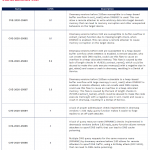CES 2021: Router swarms invade your home (and know where you are)
New mesh Wi-Fi routers may be the answer to your wireless signal woes, but how about your privacy and security?
Wi-Fi is hard, especially powering the swarms of smart devices in the average home. To combat dead spots, metal surfaces which block or reflect signals, and distant garages too far to connect, manufacturers at CES are rolling out router swarms using the new Wi-Fi 6E rules. These smart devices will get Wi-Fi to the nooks and crannies, but also spy on you and know where you are.
Rather than having one central router that is in charge of reaching your whole home, new routers will form a mesh with a distributed brain that tracks when signals are having a hard time propagating and work around it. By placing lots of tiny little mesh nodes in different rooms, they can learn the RF environment by comparing signal propagation. They can even split signals into tiny slivers to better communicate if they run into interference. Since you affect signal propagation when you stand in a room, they even learn to work around you too. This also means they become de facto motion detectors, since they would know where you are (and aren’t).
Sold as an upgrade, these distributed surveillance devices will make your Wi-Fi work better, sometimes a lot better (due to better frequency management), and that’s how they’re sold. But so much for privacy in private spaces.
And what about security?
Many systems have a cloud component, allowing them to be remotely managed, or remotely managed directly by your ISP. But in the event of a breach – in an industry that lacks an enviable security track record and where time-to-market trumps security – bad actors would know way more about your home environment than you’d like.
Remote management woes currently rank near the top of our list of most vulnerable attack entry points. Putting remote management on every room in your house seems like a fresh new opportunity for hackers, since remote management channels would likely be enabled by default, speeding the onboarding process by ISP install crews.
RELATED READING: New Year’s resolutions: Routing done right
Customers want it anyway. If someone can “magically” log in and fix Wi-Fi woes – fine. They’ll even pay for it as an upsell in the form of managed Wi-Fi service. This service’s control panel has a view to every device that’s connected in your house, their signal strengths, data transfer rates, sites they visit, how long they’ve been online, and a host of other metrics. They can also be used as a sort of low-grade alarm.
As distributed routers burrow further and further into your private life, it seems clear that some invisible line would be crossed whereby they would collect personally identifiable information (PII), which would put them at legal odds in certain parts of the world. We’ll see what legislators think of the technology in the coming years.
Meanwhile, some customers are happy to pay an extra $10 a month to implement these surveillance systems, and hope for the best. If you’re in the market, CES is definitely the place for you to start.
